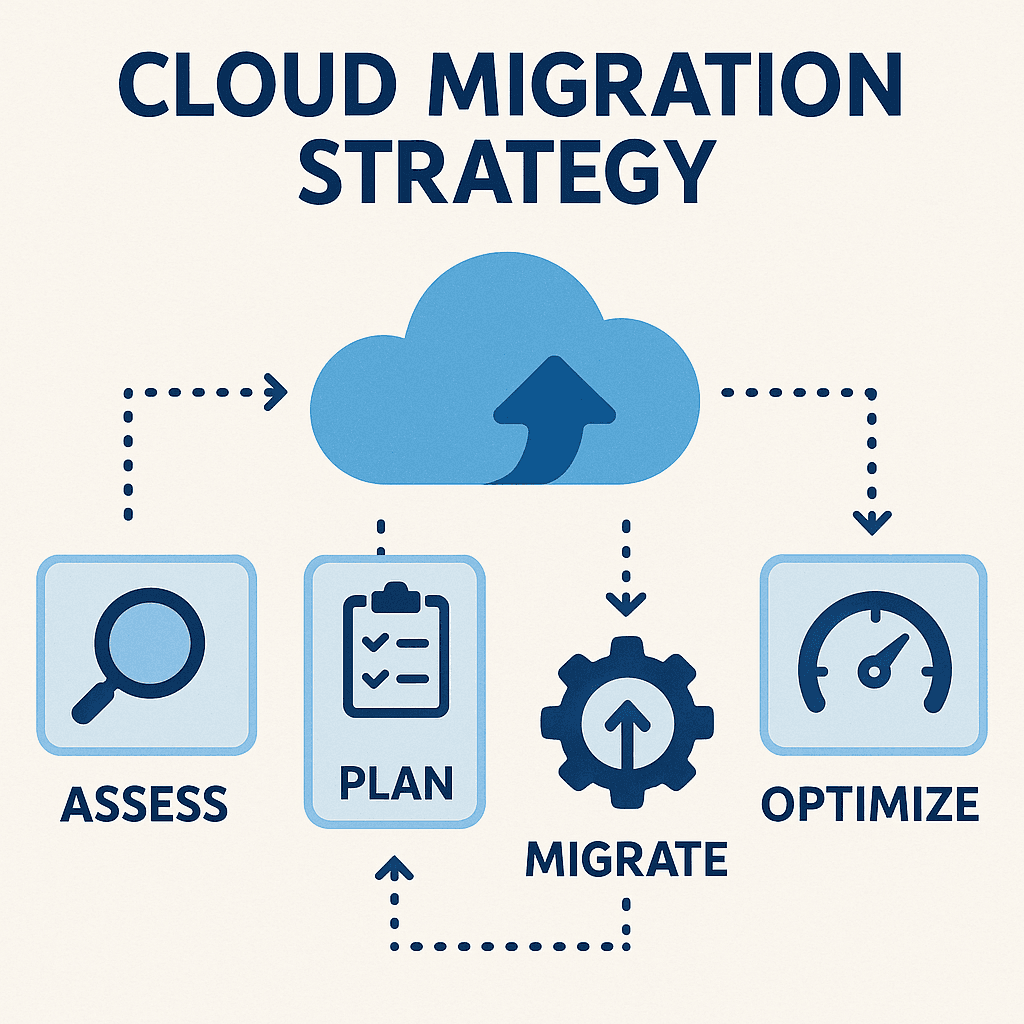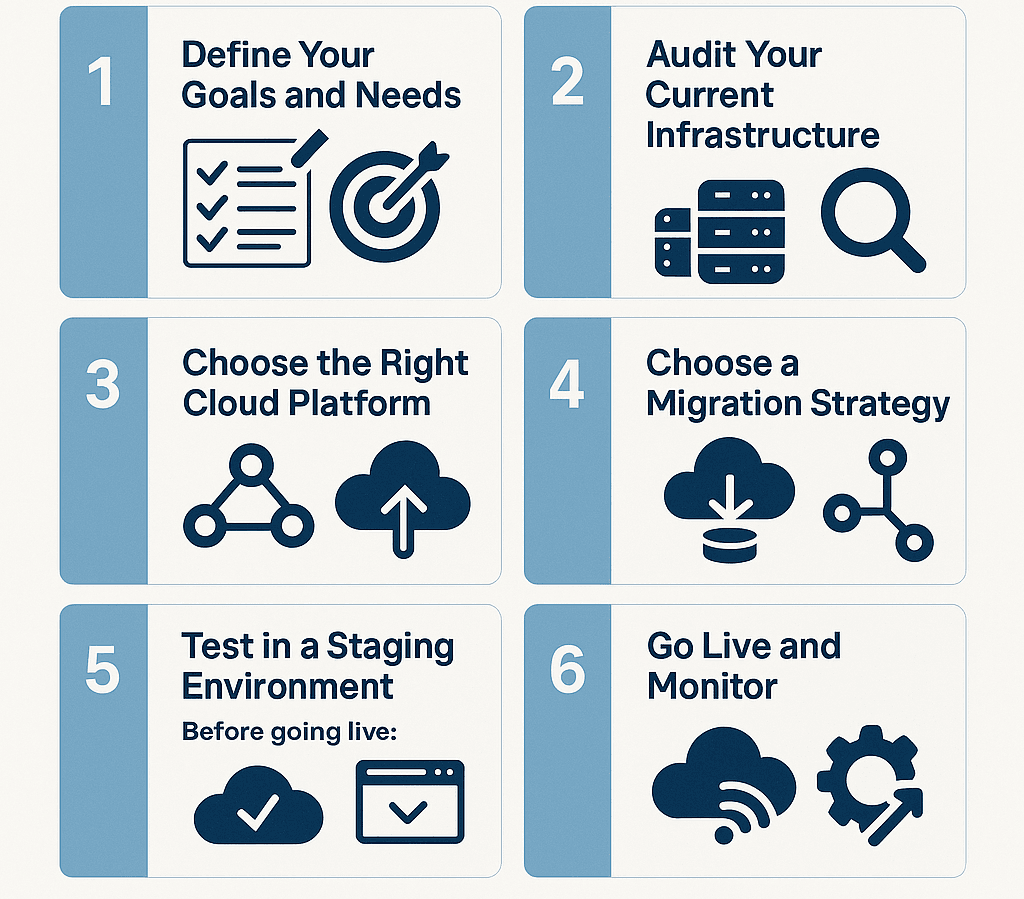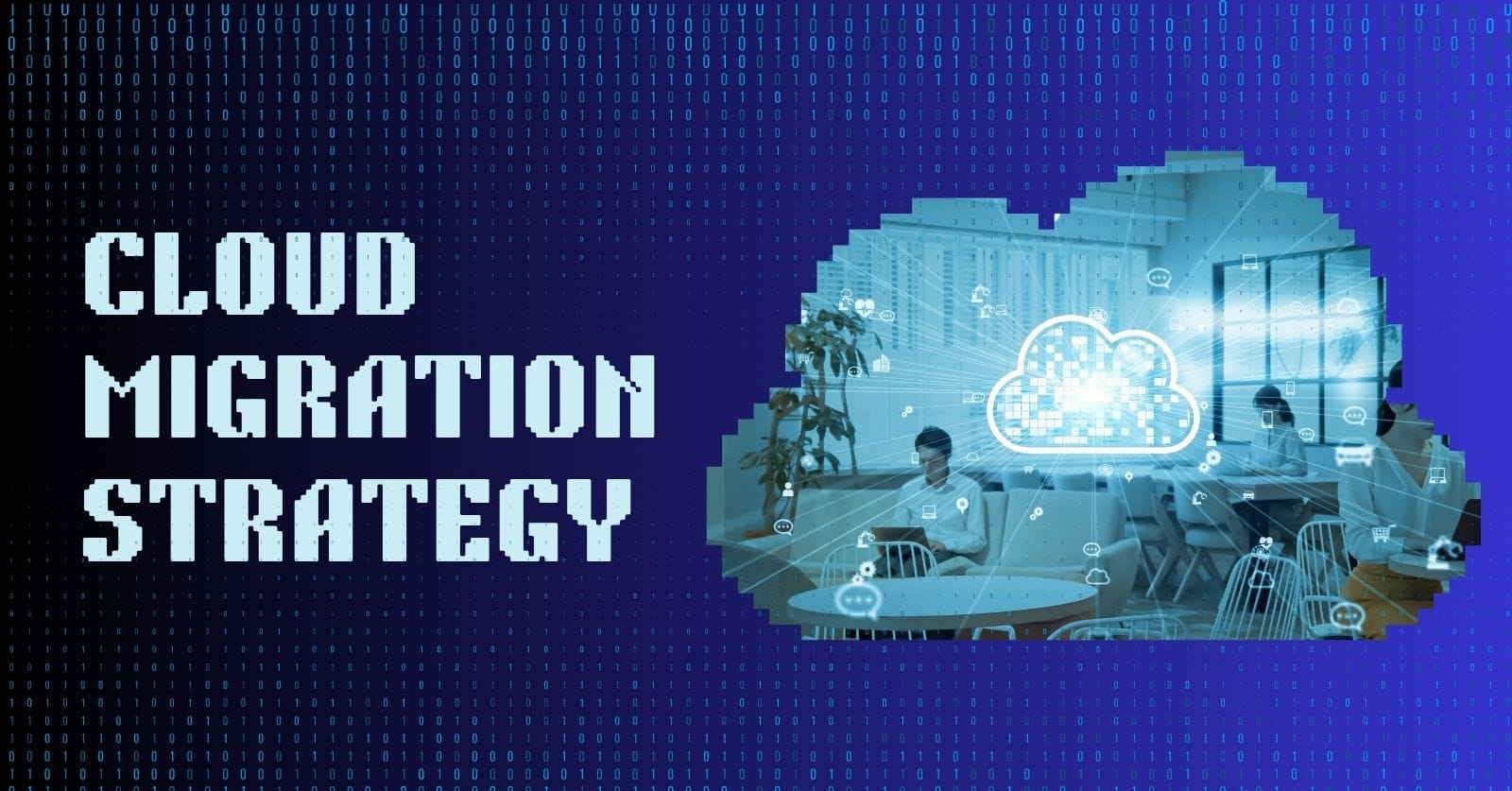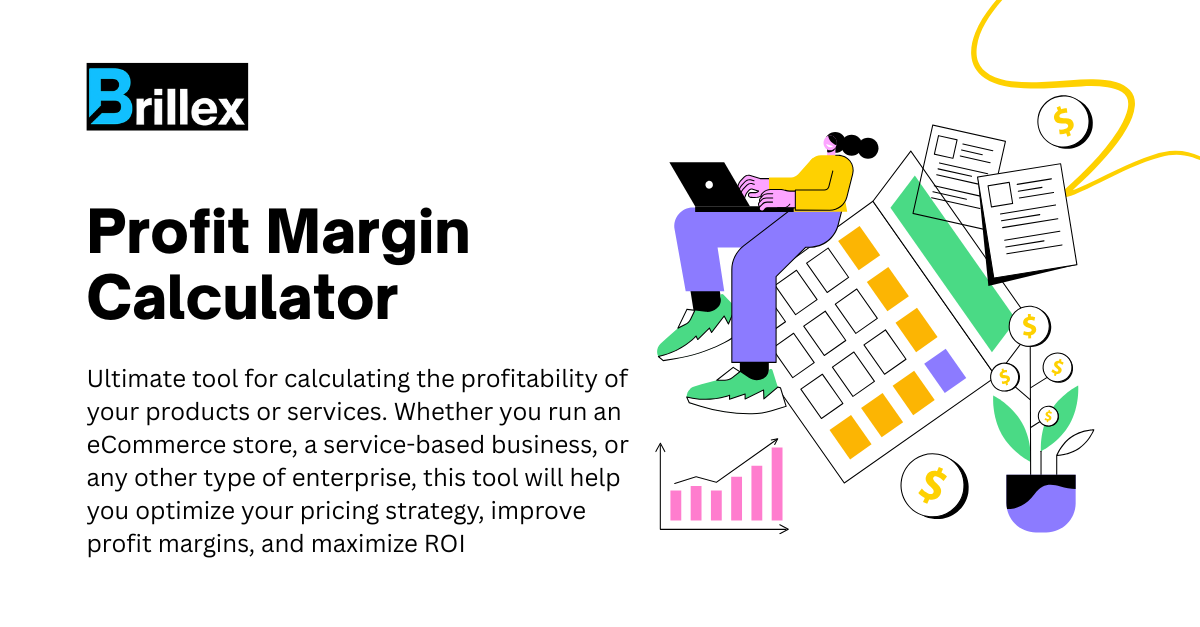What is a Cloud Migration Strategy?
A cloud migration strategy is a step-by-step plan that helps a business move its digital assets—like websites, apps, databases, and files—from local servers to cloud platforms like AWS, Google Cloud, or Microsoft Azure.
Just like moving to a new office, you need to plan, pack, transfer, and settle everything properly. A well-thought-out strategy makes sure your business doesn’t face delays, data loss, or high costs during the move.

Why Should You Migrate to the Cloud in 2025?
More businesses are switching to the cloud because it offers:
- Flexibility – Work from anywhere and scale up or down easily
- Lower Costs – No need to buy and maintain physical servers
- Security – Cloud providers offer powerful built-in security features
- Speed – Launch products and features faster
- Disaster Recovery – Easy backups and recovery plans
At Brillex, we’ve helped several clients migrate to the cloud safely and grow faster by using the right tools and planning. Let’s break down how you can do the same.
Step-by-Step Cloud Migration Strategy

Step 1: Define Your Goals and Needs
Start by answering:
- Why do you want to move to the cloud?
- What are your biggest pain points with your current setup?
- Are you trying to reduce costs, improve speed, or both?
Tip: Involve your IT team, finance team, and business leaders early on.
Step 2: Audit Your Current Infrastructure
Create a list of everything you’re currently running:
- Websites
- Mobile or web apps
- Databases
- APIs or backend systems
- Security tools
Also, check:
- How much storage you’re using
- Server performance
- Monthly infrastructure costs
This helps you understand what exactly needs to be moved.
Step 3: Choose the Right Cloud Platform
The three major cloud providers are:
| Platform | Best For | Free Tier Available |
|---|---|---|
| AWS | Scalable, enterprise-level apps | ✅ Yes |
| Google Cloud | AI and data-focused projects | ✅ Yes |
| Microsoft Azure | Hybrid businesses and .NET support | ✅ Yes |
Each platform has its own tools for migration:
Step 4: Choose a Migration Strategy
There are 5 common cloud migration strategies. They’re also called the “5 Rs”:
- Rehost (Lift and Shift)
Move apps without changing anything.
✅ Fastest but less optimized. - Refactor (Re-architect)
Make some improvements to apps before moving.
✅ Useful if your app isn’t cloud-ready. - Revise
Make major changes to your app before migrating.
✅ More flexible but time-consuming. - Rebuild
Start from scratch on a cloud-native platform.
✅ Best for long-term gains. - Replace
Move to a third-party SaaS (e.g., Salesforce, HubSpot).
✅ Simplifies maintenance.
Choose based on:
- Budget
- Timeline
- Tech resources
- Business goals
Step 5: Plan for Data Migration
Moving databases and files safely is the most important part.
- Backup everything
- Set downtime windows
- Use encryption for security
- Test transfers in small chunks
If you’re using apps like ERPs, CRMs, or eCommerce platforms, make sure they support cloud hosting.
Step 6: Test in a Staging Environment Before going live:
- Set up a test version of your system in the cloud
- Check performance, functionality, and speed
- Fix any bugs or compatibility issues
Tip: Involve your QA (quality assurance) team to help.
Step 7: Go Live and Monitor
Once testing is complete:
- Launch the cloud version
- Keep monitoring your servers, databases, and user feedback
- Track metrics like uptime, page load speed, and usage
You can use cloud-native tools like:
- AWS CloudWatch
- Azure Monitor
- Google Cloud Operations Suite
Step 8: Optimize and Improve
After migration:
- Scale resources as needed
- Turn off unused instances to save cost
- Apply patches and update security
- Automate backups
Continue improving your cloud infrastructure based on performance reports.
Tools You Can Use
| Tool | Purpose |
|---|---|
| CloudHealth | Monitor cloud spending and usage |
| Terraform | Infrastructure as code (for automation) |
| CloudEndure | AWS migration and disaster recovery |
| Azure Site Recovery | Business continuity and migration support |
Common Cloud Migration Challenges
- Downtime – Plan migration during off-hours or weekends
- Data Loss – Always back up before moving
- Cost Overruns – Set budgets and alerts
- App Compatibility – Some old systems may need updates
- Lack of Cloud Skills – Train your team or hire experts (Talk to Brillex)
Real Example: Migrating a Mobile App to the Cloud
Let’s say you have a food delivery mobile app hosted on a small shared server. It crashes during peak hours.
By migrating to Google Cloud:
- You move the backend and database to scalable infrastructure
- Auto-scaling handles traffic spikes
- You save costs with pay-as-you-go billing
- Your app performance improves
Final Thoughts: Should You Migrate to the Cloud?
If your app or website is slow, unstable, or hard to manage, it’s time to move to the cloud. It makes your business faster, safer, and future-ready.
Start small. Migrate one part at a time. Use free tools. And don’t be afraid to ask for help.
Brillex can help you:
- Audit your systems
- Plan a safe migration
- Manage cloud hosting long-term
Contact our team for a free consultation.
FAQs About Cloud Migration
Q1: How long does cloud migration take?
It depends on your system. Small migrations may take a few days. Complex systems can take weeks.
Q2: Is the cloud secure?
Yes, if set up correctly. All major providers offer encryption, firewalls, and access control.
Q3: Can I migrate just part of my system?
Yes! Many businesses move only selected apps or services first (called a hybrid migration).
Q4: Do I need a developer to migrate to the cloud?
It helps. You can also use migration tools or work with an expert team like Brillex.



